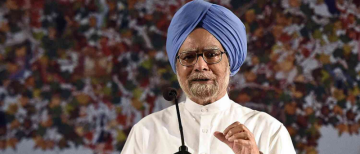In September 2025, the Indian government implemented sweeping changes to the Goods and Services Tax (GST)—a taxation system that affects nearly every consumer and business in the country. The reform slashed tax rates on hundreds of essential goods and services, changed the GST slab structure to a simpler two-tier system, and promised relief to the common man and a much-needed boost to the economy.

But the big question is: will these GST rate cuts truly revive the economy? Or are they just a short-term stimulus with limited long-term impact? This editorial explores the rationale behind the reforms, their potential benefits, challenges, and the broader economic context to answer that very question.
The Transformation of the GST Structure
GST was introduced with great expectations over half a decade ago, aiming to unify India’s fragmented indirect tax system. Since then, the GST rates had ballooned into multiple slabs—5%, 12%, 18%, and 28%—covering different categories of goods and services. This complexity sometimes hurt businesses and consumers alike with confusion and compliance costs.

The new reform has rationalized this into mainly two slabs: 5% and 18%, effective September 22, 2025. Essentials like packaged food, toiletries, small household items, agriculture machinery, and even small cars now mostly attract 5% GST or even zero tax. Items like electronics, telecom, financial services, and motorcycles below 350cc fall under 18%, while luxury and sin goods like tobacco and high-end cars were assigned a higher 40% slab.
The objective was clear: make GST simpler to comply with, reduce the tax burden on everyday items, and create room for consumption growth to revive the economy.
Economic Rationale Behind the Rate Cuts
GST rate cuts are essentially a form of indirect tax stimulus designed to lower the prices paid by consumers. Lower tax means that the cost of goods and services drops, sparking an increase in demand. When consumers spend more, manufacturers and suppliers scale up production, creating a positive ripple effect on manufacturing, employment, and economic growth.
This stimulus effect is backed by macroeconomic research showing that GST rate reductions have a relatively high fiscal multiplier—meaning that for every rupee lost as tax revenue, the economy benefits by more than a rupee in increased activity. Studies by the National Institute of Public Finance and Policy (NIPFP) suggest that GST cuts stimulate demand more effectively than cuts in personal or corporate income tax.

In simpler words, cutting GST on daily use items is a way to put more money in consumers' pockets, encouraging them to spend more, which should ideally help businesses grow, create jobs, and help revive economic growth stalled due to inflation, high interest rates, and global uncertainties.
Potential Benefits to Consumers and Businesses
One of the most direct benefits of the GST rate cuts is the relief to the common man. Items that form the backbone of everyday consumption—hair oils, soaps, biscuits, milk products, packaged foods, and even low-value footwear—are now cheaper.
This is especially beneficial for lower- and middle-income households who spend a larger share of their income on such essentials. When these costs come down, households have more disposable income left, which can increase spending in other areas of the economy, lifting demand from multiple sectors.

For businesses, particularly micro, small and medium enterprises (MSMEs), the simplified tax structure reduces compliance costs and cash flow problems linked to higher GST slabs. Lower GST on capital goods, farm equipment, and inputs can reduce production costs, improving competitiveness. This support can encourage expansions and investments, which are crucial for economic revival.
Challenges and Fiscal Concerns
Despite the promise, GST rate cuts are not without their challenges. One immediate concern is the loss of revenue for both the central and state governments. GST contributes a substantial portion of government tax revenue, which funds essential public services and welfare programs.
A large cut in rates may reduce this revenue pie, potentially increasing fiscal deficits unless offset by higher economic growth or compensating revenue measures elsewhere. The government’s ability to balance this tradeoff is critical. Rates on luxury and sin goods have been raised to 40% to partly compensate, but how much revenue that generates remains to be seen.
Moreover, the price discounts may not fully translate for consumers if manufacturers, wholesalers, or retailers choose not to pass on the full benefit, diluting the intended stimulus effect. Monitoring mechanisms have been proposed, but enforcement can be challenging in a complex market.
External and Structural Economic Factors
While GST cuts have domestic benefits, external factors also influence India's economy significantly. For instance, ongoing global inflation, rising commodity prices, and geopolitical uncertainties can blunt the impact of domestic stimulus. Additionally, structural issues like income inequality, unemployment, and supply-side bottlenecks also need attention. GST cuts can stimulate demand, but if supply chains face disruptions or if employment growth lags, the revival might be uneven or short-lived.
Is Consumption Recovery Likely?
Consumption remains the largest component of India’s GDP. The GST reform's focus on essentials and lower-priced goods aims to revive consumption, which has been somewhat subdued in recent years due to inflation and slow wage growth.

If tax cuts make essentials and mid-range consumer goods more affordable, rural and urban consumers may increase spending, boosting FMCG sales and durable goods purchases. Early signs show optimism from sectors involved in consumer goods, automobiles, and electronics.
However, the pace of consumption recovery will also depend on overall economic confidence, credit availability, and sustained income growth.
A Step in the Right Direction, But Not a Cure-All
The 2025 GST rate cuts reflect a bold and much-needed reform to simplify taxation and energize consumption. By lowering the tax burden on essential goods and services, the government is targeting the heart of India’s consumption-driven economy to revive growth.
Yet, these rate cuts, while beneficial, are not a magic bullet. The success of this reform in truly reviving the economy will depend on broader fiscal prudence, consumer confidence, business investment, and how swiftly supply chain and structural economic issues are addressed.

In essence, GST rate cuts create a favorable environment for economic revival, but comprehensive policy coordination and sustained efforts across sectors will determine if the Indian economy can gain lasting momentum beyond this initial boost.
With inputs from agencies
Image Source: Multiple agencies
© Copyright 2025. All Rights Reserved. Powered by Vygr Media.


























